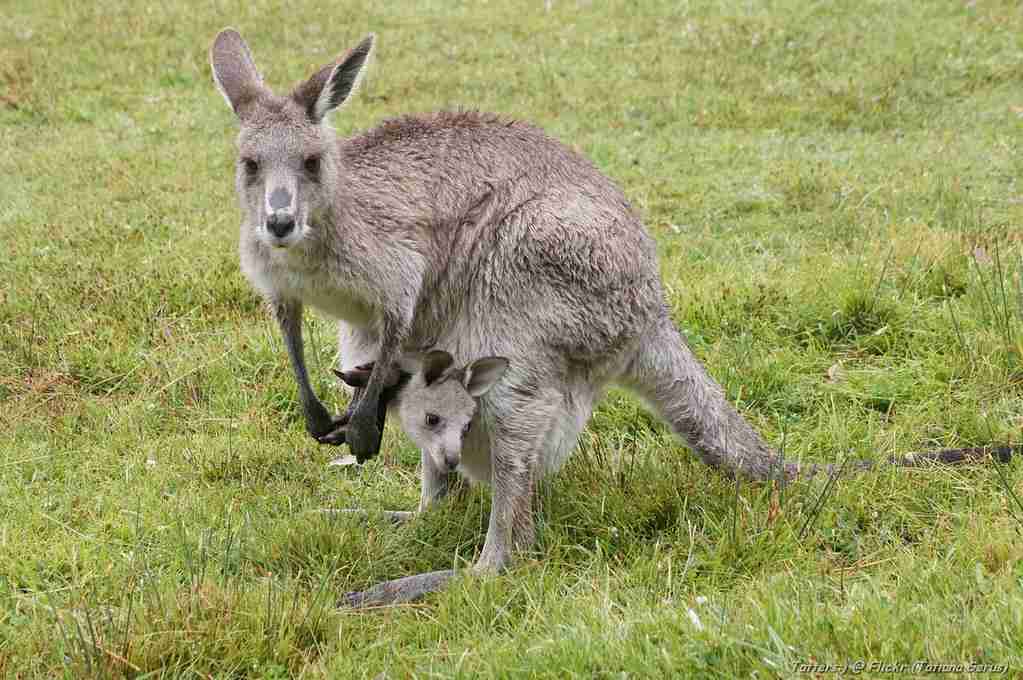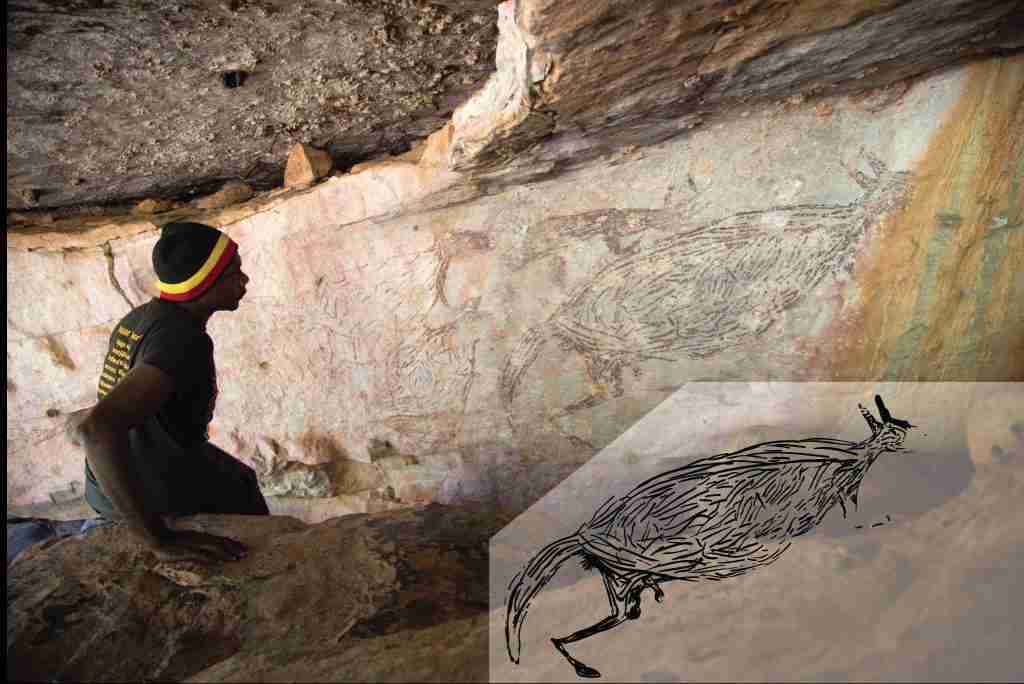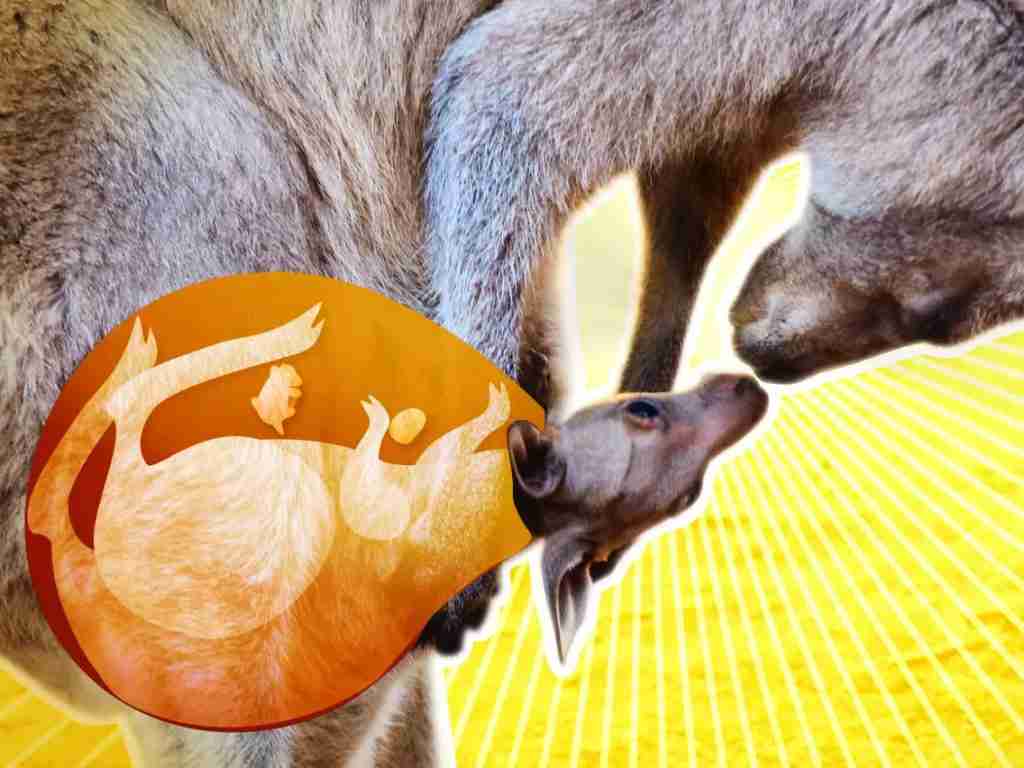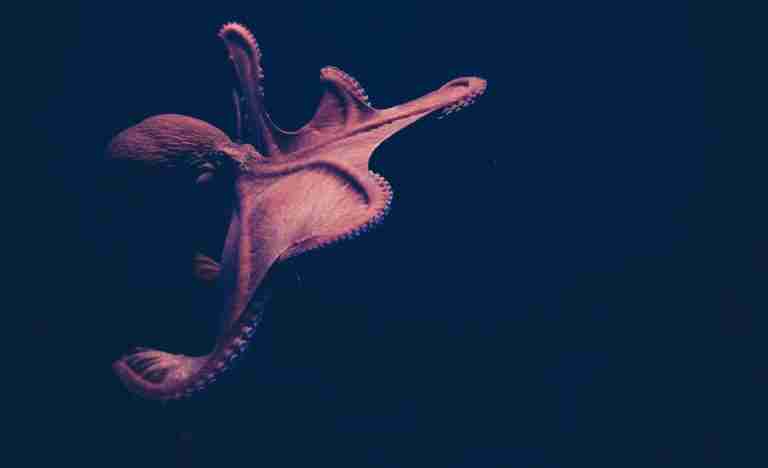22 Fun Facts About Kangaroos | Hopping Pouches
1. Kangaroos are the largest marsupials on Earth.
Kangaroos hold the title of the largest marsupials on our planet. These incredible creatures can grow between 3 and 8 feet tall and weigh 40 to 200 pounds.
Among them, the eastern gray kangaroo tips the scales as the heaviest, while the red kangaroo stands out as the tallest. The red kangaroo, in particular, thrives in the arid heartlands, showcasing its remarkable size.
2. Kangaroos are found exclusively in the Australian Continent.
One of the unique facts about kangaroos is their exclusive home in Australia and Papua New Guinea. With an estimated 42.8 million kangaroos roaming Australia’s commercial harvest areas in 2019, their numbers have declined from 53.2 million in 2013.
Theories suggest their survival in these lands owes much to the absence of large, meat-eating predators, allowing these remarkable marsupials to thrive and evolve uniquely.
3. Some Kangaroos can hop 25 feet in a single bound.
Red kangaroos are true marvels of speed and agility. Thanks to their powerful hind legs, they can race across the landscape at speeds topping 35 miles per hour. With each bound, they can leap an impressive 25 feet forward and reach heights of 6 feet.
Interestingly, female red kangaroos are noted for being smaller, lighter, and even quicker than their male counterparts, showcasing their remarkable hopping abilities.
4. Kangaroos use their tails as a fifth leg when moving slowly.
Another cool fact about kangaroos is their unique way of moving slowly by using their tails as a powerful fifth leg. When kangaroos graze or walk, their tails work hard, providing support, propulsion, and power, much like a human leg during a stroll.
This remarkable use of their tails for pentapedal locomotion showcases their adaptability and the extraordinary biomechanical role their tails play in their daily lives.
5. Kangaroos have large, susceptible ears.
Kangaroos possess large, sensitive ears that give them exceptional hearing abilities. They can swivel these ears in any direction, enabling them to detect sounds and vibrations from other kangaroos or predators around them.
Their ability to rotate each ear independently by 180 degrees allows them to cover a full 360-degree range. This unique feature helps them precisely locate sound sources, enhancing their awareness and survival in their environment.
6. In Australia, Kangaroos out number the human population.
Australia’s kangaroo population, estimated at 45 million, vastly outnumbers its human population of 25 million. This surge has prompted concerns over crop damage and resource competition, leading to calls for kangaroo culling and consumption.
Efforts to balance this growth include encouraging Australians to eat kangaroo meat, aiming to control the numbers and reduce the impact on agriculture and natural resources.
7. Kangaroos communicate through body language.
Speaking of interaction with each other, Kangaroos use a mix of body language and vocalizations to communicate. They stomp their hind legs to warn others of danger and employ various sounds for different situations, like alerting predators or attracting mates.
Even without hands, they use gaze alternations to engage in what seems like intentional communication, especially when faced with challenges they can’t solve alone.
8. Joeys can go dormant until the pouch is vacant.

Female kangaroos have a unique reproductive ability; they can carry a dormant embryo while a joey is still in the pouch. This younger Joey remains inactive until space becomes available.
Joeys typically spend 6 to 9 months growing in the pouch before venturing out, though they may return for nourishment. This ensures continuous care and the survival of successive offspring.
9. Kangaroos are great swimmers.
One of the interesting facts about kangaroos is that they are skilled swimmers. They often swim to escape predators, cross rivers, or cool down. In water, kangaroos paddle with their legs, which move independently, and use their powerful tails for propulsion.
Remarkably, they can hold their breath underwater for up to 15 minutes, showcasing their adaptability and survival skills in various environments.
10. Kangaroos have a unique reproductive system.
Kangaroos have a unique way of having babies. They have three special paths inside their body for having babies and can be pregnant almost all the time.
They give birth to very tiny babies, no bigger than jellybeans, which then crawl into their mom’s pouch to grow bigger and stronger. This amazing system lets them take care of more than one baby at different stages at the same time.
11. Kangaroos are herbivores.
Kangaroos are plant-eaters, with a diet mainly consisting of grasses, leaves, ferns, and occasionally flowers and fruits. They chew their food twice, similar to cows, to help digest it in their special stomachs.
Active mostly at night, they graze under the cover of darkness. Young kangaroos, known as joeys, start with their mother’s milk before gradually adding plants to their diet.
12. Australia’s oldest rock painting is a Kangaroo.

In the Kimberley region of Balanggarra Country, a two-meter-long kangaroo painting holds the title of Australia’s oldest known Aboriginal rock art.
Located in a rock shelter, this ancient depiction has been dated between 17,500 and 17,100 years old, offering a remarkable glimpse into the country’s rich indigenous history and the enduring significance of kangaroos in Aboriginal culture.
13. Kangaroos defend themselves with their powerful kicks.
Kangaroos defend themselves with remarkable agility, using their arms to spar and their powerful legs for devastating kicks. They can grip adversaries with their forepaws and deliver forceful strikes with their clawed hind feet, capable of causing severe injury or death.
In confrontations, whether with other kangaroos or predators like dingoes, their kicks can exert up to 759 pounds of force, showcasing their evolved combat skills.
14. Female kangaroos can delay the development of their embryos.
Another interesting fact about female kangaroos is their ability to pause the development of their embryos. This unique biological feature, known as embryonic diapause, allows a kangaroo to extend gestation for up to 11 months.
The pause in development waits for the right conditions, such as when the current joey leaves the pouch. Almost all kangaroos and wallabies can do this, with the timing influenced by factors like lactation and seasonal changes.
15. Kangaroos may sacrifice Joeys to predators.
An intriguing survival tactic among kangaroos involves mothers potentially sacrificing their joeys to escape predators. In dire situations, when evasion seems unlikely, mother kangaroos may drop their young from their pouches, diverting the predator’s attention to ensure their survival.
This harsh reality underscores the instinctual drive to preserve the ability to reproduce in the future, despite the immediate loss.
16. Kangaroos are involved in 90% of road accidents in Australia.

Kangaroos and wallabies are at the heart of 90% of animal-related vehicle accidents in Australia, making them the most common cause of wildlife collisions. Although animal collisions constitute only 5% of all road accidents in the country, the vast majority involve these marsupials.
This significant figure underscores the need for heightened awareness and caution among drivers on Australian roads.
17. Newborn Joeys are only grape-sized at birth.
At birth, newborn joeys are astonishingly small, measuring just one inch long, roughly the size of the grapes. These tiny marsupials embark on an incredible journey through their mother’s fur to reach the safety of the pouch, where they continue their development.
Lacking a placenta, joeys rely on their mother’s milk within the pouch for the nourishment needed to grow and thrive.
18. Kangaroo mothers communicate with their babies using clicks.
Kangaroo mothers use clicking noises to communicate with their joeys, fostering a unique bond. Inside the pouch, joeys latch onto one of their mother’s four teats, each offering milk tailored to different stages of their growth.
While kangaroos express alarm through hissing and growling, the gentle clicks of a mother to her baby signify care and communication, and males chuckle to court females.
19. Kangaroos consider Dingoes as their enemies.
Dingoes, Australia’s largest terrestrial carnivores, are considered the primary natural enemies of kangaroos. Kangaroos defend themselves using their arms, claws, and powerful kicks, especially against threats from dingoes and wedge-tailed eagles.
While dingoes are opportunistic hunters that primarily feed on meat, including kangaroos, wallabies, and other small mammals, they also play a significant role in the natural balance by controlling kangaroo populations.
20. Kangaroo pouches have everything a baby Room needs.

One of the cool facts about kangaroos is their pouches act as a nurturing haven for their joeys. These pouches, or marsupiums, offer more than just warmth and protection; they’re equipped with everything a tiny, blind, jellybean-sized newborn needs to grow.
Inside, joeys receive the necessary nutrients and care, essentially making the pouch a complex, mobile nursery until they’re ready to face the world.
21. Kangaroos have high-crowned teeth.
Kangaroos, unique among marsupials, boast an unusual dental arrangement with three pairs of incisors in their upper jaw and one pair in their lower jaw, totaling 34 teeth for an adult.
They lack canine teeth, instead having a set of high-crowned molars designed for grinding, which is essential for their herbivorous diet. This specialized dentition supports their feeding habits, allowing efficient processing of tough vegetation.
22. The western grey kangaroo has a strong smell, reportedly like curry.
The Western Grey Kangaroo, particularly the males, are known for emitting a strong, curry-like odor, earning them the nickname “stinkers.” This unique scent comes from glands secreting an oily substance, distinguishing them from other kangaroo species.
Besides their notable smell, this species is also the most vocal, with females forming lasting social and familial bonds, enhancing their complex social structure.
FAQs
There are approximately 50 million kangaroos worldwide, with the majority living in Australia. Their population can fluctuate based on environmental conditions, such as droughts and food availability, impacting their numbers.
Kangaroos give birth to tiny, underdeveloped young, known as joeys, which are about the size of a lima bean. Immediately after birth, the joey crawls into its mother’s pouch to continue developing.
A joey stays in its mother’s pouch for about six to eight months. During this time, it develops fully by feeding on milk and gaining strength. Even after leaving the pouch, it may return to feed or seek comfort.
Kangaroos can jump incredibly high, reaching heights of up to 3 meters (about 10 feet) in a single leap. This ability allows them to navigate rough terrain and escape predators efficiently.
Kangaroos are fast runners, capable of reaching speeds up to 60 kilometers per hour (about 37 miles per hour) over short distances. This speed helps them evade predators and cover large areas in search of food.







